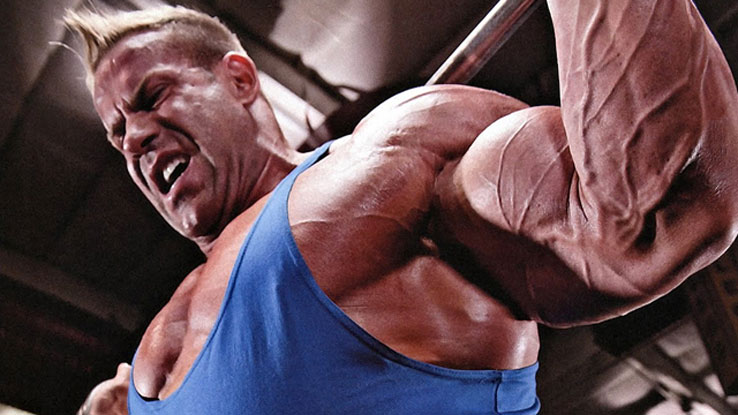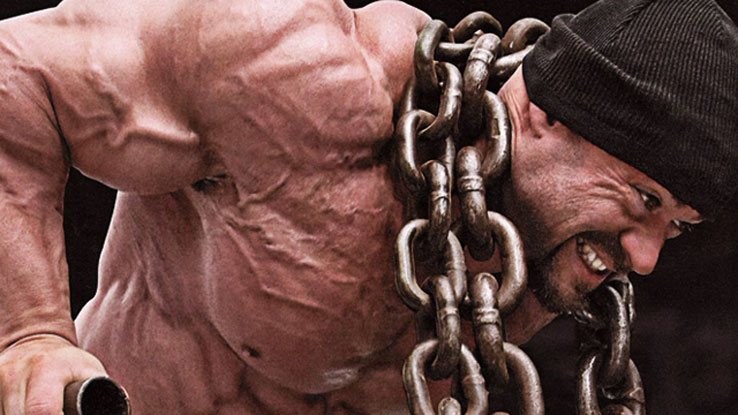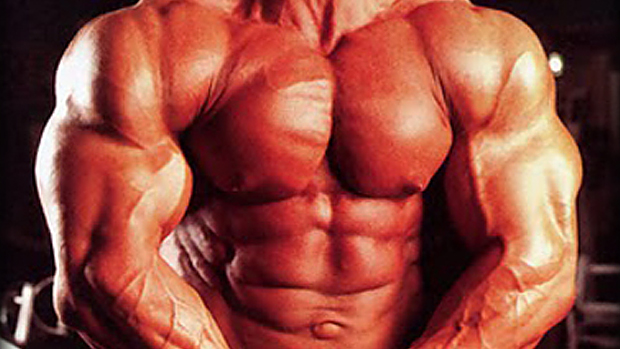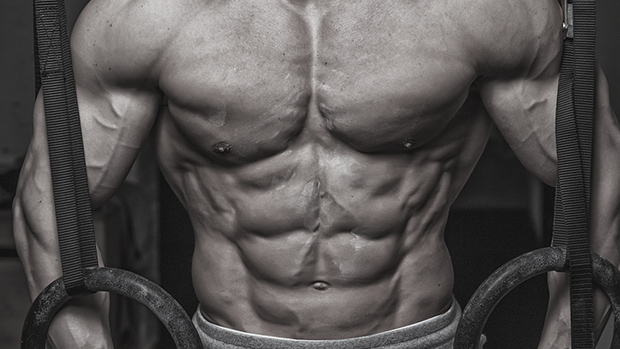Seminars are now a thing of the past for me. However, that doesn't mean I'm through with passing on everything I know about strength – I just need a new medium to take the experience up a level. And I think this "virtual squat seminar" is the answer.
For years I was a part of the seminar program at EliteFTS. Dave Tate originally began taking me to seminars to help him out as it's much easier doing the hands-on portion when you have two people. Eventually, Dave handed me the reigns and I began doing seminars on my own.
The best thing I learned from Dave about squatting was this mantra: "Everyone has their own squatting style, but one must learn the best technique for their style."
Not everyone is going to squat the same way. Some may use a high bar or a low bar, others may have more forward lean or use a narrower stance. For my money, the two greatest squatters I've ever seen in person (not on a video) are Steve Goggins and Oleksandr Kutcher. Both guys have very different squat styles but also possess world-class squatting strength.
Despite the differences and styles of squatting, there's some common ground amongst every great squatter. And after watching, coaching, and teaching thousands of people in the squat, I've learned a couple of things that should help any style of squat.
Listed below are some common problems and a variety of solutions. These can apply to just about any squat style and could help you move more weight when the bar is on your back.
For most lifters who have problems reaching depth, narrowing their stance usually fixes the problem. Now there are some lifters who have great flexibility in their hips and can reach depth with a wider stance, and can do this with no hip pain. But since they have no problems with depth and hip pain, this becomes a moot point.
Remember that having a narrower stance does not mean a narrow stance. A "wide stance" is usually defined as a stance that's much wider than shoulder width.
When people narrow their stance to shoulder-width or slightly wider, two problems usually arise. First, their squat numbers go down. This is normal, and your body and legs will quickly catch up to you. You have to be patient and learn to do things correctly. I've been guilty of this many times and know the frustration.
Mentally, this can be a big problem, and one thing I tell people is that there are many examples of people squatting huge weights with narrower stances. A quick search of YouTube reaffirms this, with Pat Mendes being a great example.
The second problem is that people over-estimate their shoulder width. This is similar to Imaginary Lat Syndrome (ILS). I had this problem until I had my wife measure the distance between the outsides of my shoulders. I then took this measurement and placed two pieces of tape on the carpet that I squat on. Using this as a guideline, I now have a reminder of where to put my feet, which keeps me honest.
Now there are some lifters that can achieve proper depth with a wide/very wide stance while also remaining injury free. To those that can do this, I applaud you.
People generally learn to begin the squat two ways: either by pushing their butt back first, or by leading with the knees. The former is usually because of a powerlifting background and the latter is associated with bodybuilding (and sometimes Olympic lifting).
Like most things in the lifting and fitness world, the answer lies somewhere in the middle. When people only push their butts back first, there's a tendency to lean way forward and try to reach depth with their head, eyes, and back. When the knees shoot forward, not only does this stress the knees to a great degree (the knee becoming the stress point of the lift), but it becomes nearly impossible to reach proper depth.
The answer is to learn how to simultaneously push the butt back and open up the knees to the sides. I like to teach people to push back a few inches (like they're going to do a good morning or a Romanian deadlift) and then open up the knees and fall into the squat.
As a coaching point, the terms "open up the groin" or "show your groin" (or any other acceptable terms for the penis/vagina region) seem to work well. When you use a shoulder-width stance, pushing your knees out becomes much easier to do. Combine this with a pushing your ass back and reaching depth becomes much easier.
I've used a plethora of different shoes for squatting – Converse Chuck Taylor's, Adidas Sambas, Metal Squat Shoes, cross trainers, running shoes, and Olympic lifting shoes. Now before I get into shoes let's make something clear, shoes can help you squat better but it's not going to turn a shitty squatter into a world-class squatter.
People who squat with wide stances tend to favor a flatter-soled shoe such as a Chuck Taylor. Those who squat with a shoulder-width stance seem to favor Olympic lifting shoes.
I personally don't find a difference in squat strength between the two, but I feel much more stable and comfortable in Olympic lifting shoes. Depending on your squat style you may find a certain shoe to be more comfortable and I'd highly recommend you try both types of shoes.
I've seen many, many lifters use an Olympic lifting shoe and immediately squat with better form, be able to reach depth, and feel more stable. Since Olympic lifting shoes are expensive, try using a 2.5 or 5 pound plate underneath your heels instead – this will give you an elevated heel similar to an Olympic lifting shoe and allow you to see if this shoe is right for you.
This may be the easiest problem to correct because it just requires discipline. Once you learn what to do, you just have to make it a habit. Unfortunately, doing mobility work and stretching is far from sexy. If training were a heavy metal band, lifting weights would be the lead guitar player and mobility/stretching would be the roadie.
There's a ton of information out there regarding what to do, when to do it, and this all leads to paralysis through analysis. If your body is wound tighter than a banjo string, I recommend you perform the Defranco Agile 8 two to three times per day – once in the morning, once before you lift, and before you go to bed. The Agile 8 is a great combination of hamstring and hip mobility, as well as having soft-tissue work for the IT bands, adductors, and piriformis.
When I see an impressive squat, I don't qualify it by its bar position. An impressive squat is an impressive squat, regardless of where the bar sits on your back. You still need strong legs, hips, back, and abs to squat 800 pounds with a high bar or a low bar.
I think this attitude is merely a product of perspective and time. A lifter with perspective can recognize an impressive effort and not belittle or minimize that effort based on a whopping 2 years of training experience and 40,000 forum posts.
I'm not married to teaching one style of bar position on the squat. Some people squat better or feel more comfortable with a high bar or low bar position. It's about using the best tool for getting the job done. And if someone needs to use a high bar position to squat correctly (and with heavier weights), I'm 100% in his corner.
The trick to finding your correct bar position is to experiment while using the same stances. You'll eventually find that sweet spot. It may take a few sessions or a few years, and this may change over the years based on your growth as a lifter and the changes in your body.
My bar position (and really squatting style) has changed drastically from when I was 185 pounds, 250 pounds, 285 pounds, and 235 pounds. You have to be ready to change and adapt as your body transforms.
When you become a proponent of one squat style, you're limiting your options as you grow and develop. Let's face it, most of us want to squat a ton of weight. I'll be damned if I'm going to sign a contract that says, "But only if I have X stance with Y bar position."
The importance of hand position was shown to me by Todd Brock. I was having some problems squatting and Todd took a step back, examined my form, and told me, "Bring your hands in."
Immediately, my form became better – my upper and lower back was locked in and I was no longer rounding in the hole. I was able to remain more upright, the bar was perfectly positioned over my hips, and my squat felt strong and fast.
Moving my hands in (and this was only by about 6 inches per side) brought everything together and improved my squat greatly. Essentially what this does is build a more stable shelf, creates more tension throughout the body (helps you stay tight), makes you less likely to bow over in the bottom position of the squat, and helps you drive your elbows underneath you when you squat.
Now some people do better with a wider hand position – I've seen countless people squat well with their hands by the sleeves of the barbell. But I've seen too many people bring their hands in and improve their squat form greatly for it to be a coincidence. I'm not asking people to bring their hands in narrow, I'm just asking them to bring them closer, even if it's a few inches per side.
One of the many excuses I hear from lifters is lack of upper body flexibility. They claim they're too muscle bound to take a narrower grip. I then show them a video of Konstantin Konstantinov. This ends that argument.
Improving your upper body flexibility for squatting is easy – shoulder dislocates, multiple warm-ups sets, and more frequent squatting can all be used to remedy the situation.
If it's an issue of an injury then I have no problems with that. You have to adjust to what your body allows you to do.
If your knees don't want to cooperate to your squatting lifestyle, there are a couple different things you can try before you give up completely. These suggestions may also apply to anyone that does a lot of endurance running (or any running at all), or older lifters who simply want to be proactive in keeping their knees healthy.
Learn to Box Squat
Box squatting can certainly minimize the stress on your knees by eliminating the bounce out of the hole.
Like any lift, there's a difference between doing box squats and doing box squats correctly. Here's a simple list to remember when learning to box squat:
Your box squat should look like your regular squat. Don't change your bar position or your stance.
Don't sit too far back. If you're on the box and someone were to take the box out from underneath you, you shouldn't fall on your ass.
Don't relax on the box – stay tight. Think of the box squat as an honest way of doing a pause squat.
Use the box height that allows you to keep your knees and hips healthy. If this is slightly above parallel, that's okay. You're still squatting and not doing anything that's going to further injure or worsen your condition.
Wear Knee Sleeves
There are a number of good knee sleeves out there that help maintain pressure on your knees while keeping them stable and warm. I like the EFS knee sleeves as they do a great job with stability and warmth. They're like wearing a light knee wrap. These will go a long way in keeping your knees healthy and strong.
Foam Rolling IT Band
When your IT band is tight, it will pull on your knee and cause a lot of pain. Using a foam roller (or something similar) to help loosen this area is a cheap remedy to a painful situation.
Lower the Volume
There's a resurgence in the lifting world equating high volume training with penis size. This is typical in America where people brag about working 12 hours days and 80-hour weeks, but don't brag about what was done. I'd rather employ people that work 2 hours/day and get stuff done than strap them down with busy work so they can martyr their cause. In the end, it's about quality, not quantity.
The best way to make up for lost volume work is to use the sled or Prowler, as it's much less stressful on your back and knees and great work for your legs and hips. For those familiar with the 5/3/1 program and the Boring But Big assistance program, think of doing your main sets with the box squat and using the Prowler for the "5 sets of 10."
Essentially, that's how we treat people whose body can't handle the high volume squatting anymore. Quality work with the barbell, quantity work with the Prowler.
There seems to be a lot of questions dealing with eye position in the squat. This question always gets asked when I present with Mark Rippetoe, as if Mark and I are going to duel with each other at the seminar, using our eyes as weapons.
Those of you familiar with Rippetoe's book, Starting Strength, know that he's an advocate of keeping the eyes and head down while squatting.
This is the opposite of what most of us have been taught, but then again, many of us were taught that squatting is bad for your knees and there are no dumb questions, both of which have repeatedly been proven false.
From experience, I can say that I've seen Mark do wonders for people in the squat. I've seen him transform someone that has Train Wreck Squat Form into a thing of beauty. A few simple cues, an adjustment here and there, and what looked hopeless now looks perfect.
If you can go to a seminar with Mark, be prepared to learn and be prepared to have your questions honestly answered. I've never seen Mark speak and not been thoroughly entertained at his answers and watching people squirm at his honesty.
Now that I've kissed Mark's ass, I'll say that squatting with your eyes and head down is correct – for some people, but not all. I'd highly advise anyone who puts a bar on his back to try different head/eye positions and see which one works best for their squatting style.
And this may change, slightly, from workout to workout. It's okay to deviate and do what's best for you.
I've had some workouts where the head down allows me to squat faster and stronger, and other workouts where I had to keep my eyes more forward.
Now these small adjustments during a workout should be applied to all areas of your squat (and really your other lifts, too). You should always have a base form for all lifts. But you must be able, both mentally and physically, to change and make adjustments.
I'm not going to get into templates for assistance work. I've written, as have thousands of others, on how to program training and assistance work.
One thing that I firmly believe is the priority of strengthening the abs and low back. These two areas are essential in lifting big weights and take time to develop. The keys are good mornings, back raises, and reverse hyperextensions for your lower back, and the thousands of abdominal exercises for your abs.
Too many times people get caught up in the perfect exercises when they just need to be doing something. Using high reps and low reps with a variety of exercises seems to work best, but the take home message is that you have to be strong in the middle.
You can debate one-leg exercises, front squats, safety bar squats, leg presses, machines versus free weights, or partial-reps versus full range all day long, but you can't debate the value of doing the work necessary to build your own lifting belt in the middle of your body.
Some may have to do more than others and this work is often tedious and boring, but someone has to lay the bricks before the castle is fit for a king.
I hope that the information in this article and other books and seminars can help guide you towards the goals of squatting. Unfortunately, the one thing that can't be taught is the aggression and mindset during a squat set.
One needs to set aside fear of injury, or the fear of missing a rep. While the squat can be a cerebral and technical lift, at some point you just have to get a little stupid when you unrack the barbell and take a step back.
Some do this in a quiet, unassuming "I never knew my neighbor was a serial killer!" mode, while others seem to speak in tongues to achieve the proper mindset.
You don't get graded on your approach, but the outcome, and as long as the bar comes up, you succeeded. Follow your own path, not others, to reach that mountain.





